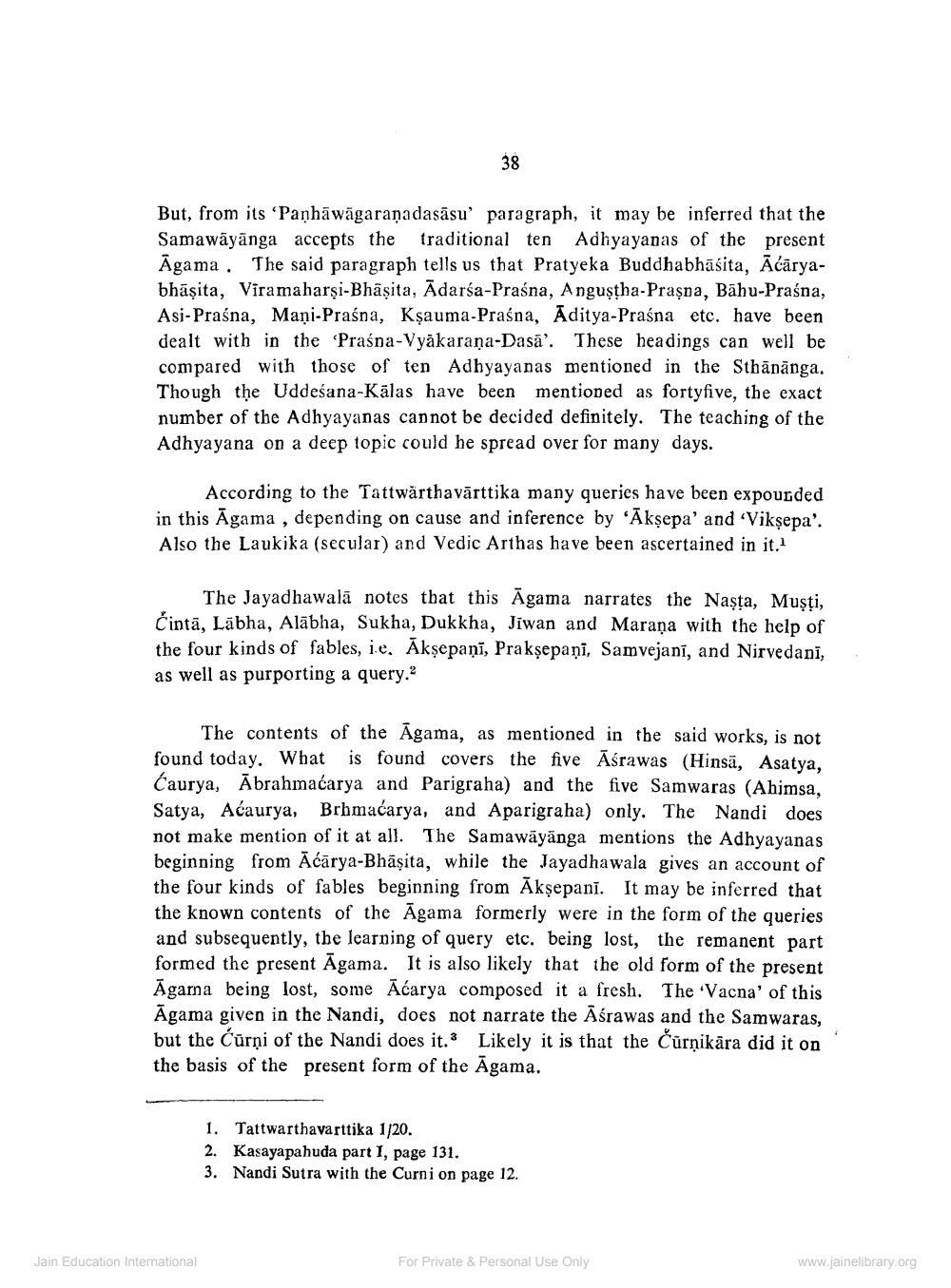________________
38
But, from its 'Paṇhāwāgaraņadasāsu' paragraph, it may be inferred that the Samawāyānga accepts the traditional ten Adhyayanas of the present Agama. The said paragraph tells us that Pratyeka Buddhabhāśita, Acāryabhāṣita, Viramaharşi-Bhasita, Ādarśa-Praśna, Anguștha-Praşna, Bāhu-Praśna, Asi-Praśna, Mani-Praśna, Ksauma-Praśna, Aditya-Praśna etc. have been dealt with in the Praśna-Vyakaraṇa-Dasā'. These headings can well be compared with those of ten Adhyayanas mentioned in the Sthānānga. Though the Uddeśana-Kālas have been mentioned as fortyfive, the exact number of the Adhyayanas cannot be decided definitely. The teaching of the Adhyayana on a deep topic could he spread over for many days.
According to the Tattwärthavārttika many queries have been expounded in this Āgama , depending on cause and inference by 'Ākşepa' and 'Vikṣepa'. Also the Laukika (secular) and Vedic Arthas have been ascertained in it.
The Jayadhawalā notes that this Agama narrates the Nasta, Musti, Čintā, Läbha, Alābha, Sukha, Dukkha, Jiwan and Maraṇa with the help of the four kinds of fables, ie, Aksepaņi, Praksepani, Samvejanī, and Nirvedani, as well as purporting a query.
Jadi,
The contents of the Agama, as mentioned in the said works, is not found today. What is found covers the five Aśrawas (Hinsä, Asatya, Caurya, Ābrahmaćarya and Parigraha) and the five Samwaras (Ahimsa, Satya, Aćaurya, Brhmacarya, and Aparigraha) only. The Nandi does not make mention of it at all. The Samawāyānga mentions the Adhyayanas beginning from Ācārya-Bhāşita, while the Jayadhawala gives an account of the four kinds of fables beginning from Akşepani. It may be inferred that the known contents of the Agama formerly were in the form of the queries and subsequently, the learning of query etc. being lost, the remanent part formed the present Āgama. It is also likely that the old form of the present Āgarna being lost, some Āćarya composed it a fresh. The 'Vacna' of this Āgama given in the Nandi, does not narrate the Aśrawas and the Samwaras, but the Ćūrņi of the Nandi does it.3 Likely it is that the Čūrņikära did it on the basis of the present form of the Āgama.
1. Tattwarthavarttika 1/20. 2. Kasayapahuda part I, page 131. 3. Nandi Sutra with the Curni on page 12.
Jain Education International
For Private & Personal Use Only
www.jainelibrary.org




